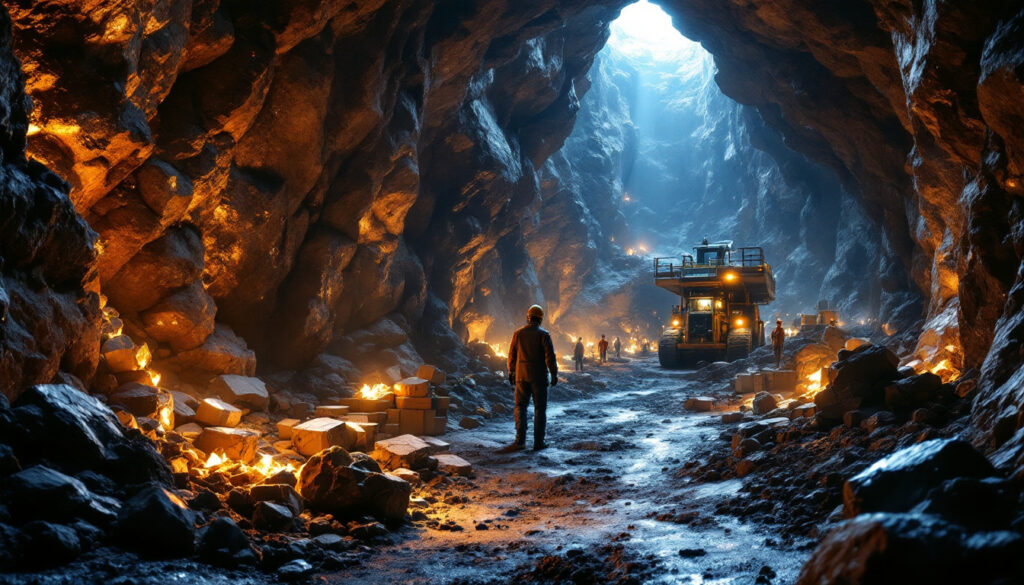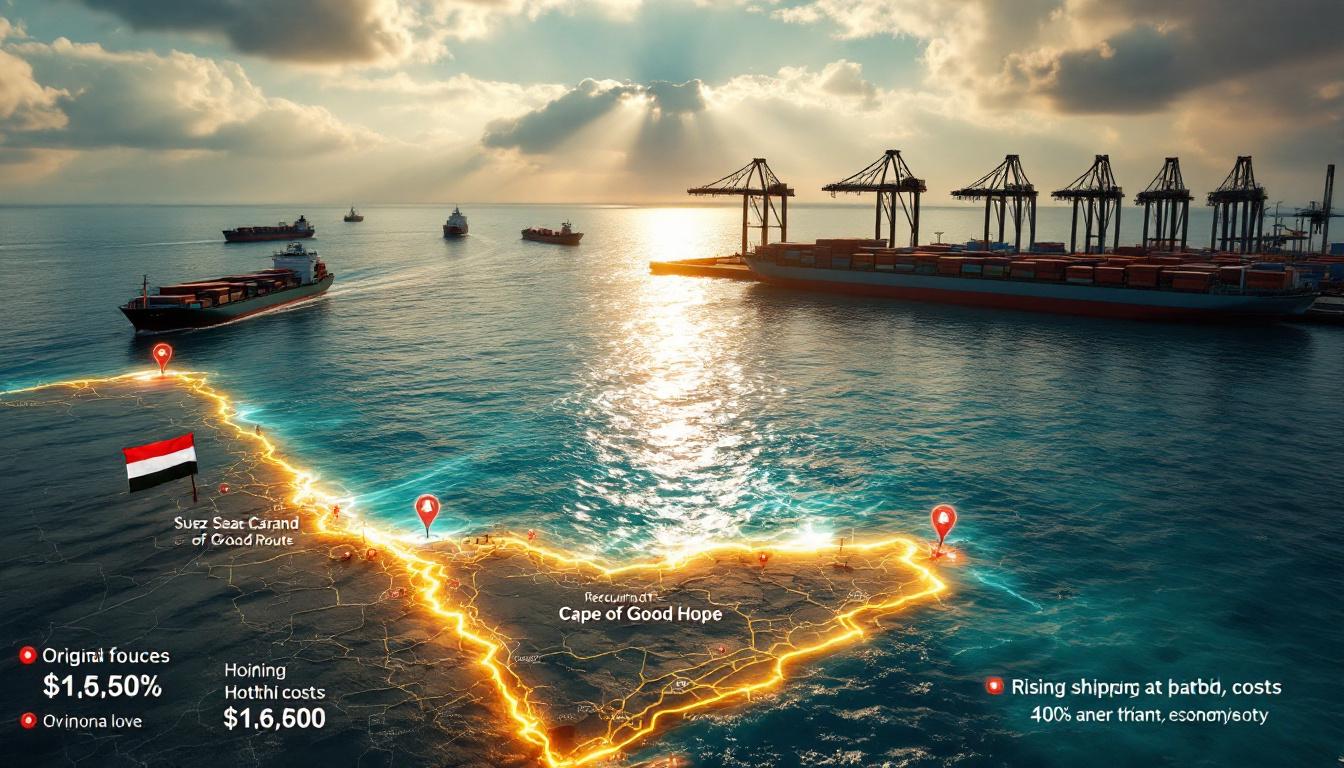What Are Critical Raw Materials and Why Do They Matter?
The Material Foundation of Modern Civilization
Materials have fundamentally shaped human history, with entire epochs named after them: the Stone Age, Bronze Age, and Iron Age. This naming convention reflects how deeply materials have influenced the development of civilization.
We exist in what can truly be called a "material world" – everything surrounding us, from the devices we use to the infrastructure we rely on, depends on raw materials extracted from the Earth.
Modern civilization has shifted from naming eras by materials to energy sources – from biomass to coal, then hydrocarbons, and now increasingly toward renewables. Yet despite this shift in terminology, geology and geoscience remain central to all energy transitions.
As Bulgaria's mining experts note, this foundation of materials science is often overlooked in discussions about sustainability, yet it underpins everything we hope to achieve in the green transition.
Critical Raw Materials for the Green Transition
A striking reality of renewable energy technologies is their material intensity – they require approximately 10 times more materials than conventional energy sources per unit of energy produced. This material demand creates a paradox at the heart of the green transition.
Consider the tangible impact: a single electric vehicle battery requires approximately 500kg of critical raw materials, necessitating the extraction of 45 tons of ore. This represents a significant increase in material extraction compared to traditional vehicles.
Energy storage solutions similarly demand substantially higher material inputs – particularly lithium, cobalt, nickel, manganese, and graphite – than conventional energy systems.
The European Union has identified 49 critical raw materials out of 94 naturally occurring elements, highlighting both the breadth of materials needed and the challenges in securing them.
How Critical is Bulgaria's Raw Materials Situation?
European Dependency on Critical Raw Materials
The EU faces significant vulnerability in its materials supply chain, relying heavily on imports for most critical raw materials. This dependency has become a strategic concern as global competition for these resources intensifies.
Currently, the EU has established ambitious targets: achieving 10% domestic mining, 40% domestic refining, and 15% recycling of critical materials. These goals represent a significant shift from current practice and will require substantial investment.
Bulgaria stands out as one of Europe's actively mining countries, primarily producing copper, gold, and various base metals. However, its full potential remains largely untapped due to insufficient exploration and outdated geological data.
Recycling capabilities across Europe, including Bulgaria, remain limited or non-existent for many critical materials. This represents both a challenge and an opportunity for developing circular economy solutions.
Bulgaria's Mining Potential and Challenges
Bulgaria possesses substantial untapped potential for critical raw materials, especially in areas with historical mining activities. Recent discoveries of significant graphite deposits, for example, highlight opportunities that modern exploration might uncover.
Significant knowledge gaps exist in geological mapping and resource assessment. Much of Bulgaria's geological data dates back to the Soviet era and requires updating with modern exploration techniques.
The absence of a functioning national Geological Survey has hindered systematic exploration and scientific assessment of Bulgaria's mineral resources. This institutional gap has limited the country's ability to develop a comprehensive understanding of its ore deposits geology.
Historical mining operations have created tailings and waste deposits that may contain valuable concentrations of critical materials overlooked in earlier extraction processes. These "secondary deposits" represent significant tailings reprocessing opportunities without additional mining impacts.
What is Bulgaria's National Strategy for Critical Raw Materials?
The New Bulgarian Research Initiative
Bulgaria has launched an ambitious 5-year government-funded program involving 14 research organizations focused on critical raw materials. This initiative represents the first coordinated national effort to systematically assess and develop Bulgaria's mineral potential in decades.
The program is notably well-funded, with approximately 25 million Euros dedicated to characterizing Bulgaria's potential for sustainable mining, processing, and recycling of critical materials. This level of investment signals a significant strategic shift in Bulgaria's approach to resource development.
The initiative focuses not only on identifying critical and strategic raw materials but also on understanding their societal, economic, and environmental impacts. This holistic approach aims to develop Bulgaria's resources in a socially and environmentally responsible manner.
Industry experts highlight that this research program could position Bulgaria as a significant contributor to Europe's critical materials security, particularly in materials like copper, graphite, and rare earth elements where the country has geological potential.
Seven Key Work Packages of the Program
The Bulgarian research initiative is organized around seven comprehensive work packages, beginning with characterization of existing deposits and occurrences of critical raw materials. This systematic assessment will update Soviet-era data with modern analytical techniques.
Another key component involves analysis of tectonic and structural controls on deposit formation. This fundamental geological research will enhance understanding of where new deposits might be found and how existing ones can be more efficiently developed.
The program includes assessment of energy resources needed for the green transition, including hydrocarbons. This acknowledges the reality that traditional energy sources remain necessary to power the transition to renewables.
Development of efficient processing methods for critical raw materials forms another critical work package. Bulgaria aims to develop metallurgical expertise specific to critical materials extraction, which often requires specialized techniques.
The initiative includes evaluation of industrial and residential waste for critical materials recovery – examining mining tailings, industrial byproducts, and urban waste for recycling opportunities. Early assessments suggest some tailings contain higher concentrations of certain critical materials than many natural deposits.
Environmental impact studies examining mining effects on air, water, soil, and biodiversity will ensure that development proceeds sustainably. This comprehensive approach includes developing remediation strategies for historical mining impacts.
The final work package involves analysis of social and economic impacts of mining activities, including public perception studies and community engagement frameworks. This acknowledges that ESG challenges in mining are as important as technical feasibility for successful development.
What Challenges Must Be Overcome to Develop Critical Raw Materials?
Time and Knowledge Barriers
The development of mineral resources operates on extended timelines – the average lead time from discovery to production ranges from 12 to 20 years. This timeframe conflicts with the urgency of the green transition, creating a significant challenge.
The mining life cycle typically requires 10-25 years before production begins, including exploration, discovery, feasibility studies, permitting, and construction. This lengthy process means that materials needed for today's green technologies should have been discovered decades ago.
Investment in exploration carries significant risk, as geological experts note that only about 1 in 1,000 prospects becomes an economically viable mine. This uncertainty complicates investment decisions and policy planning.
Critical raw materials often have extremely low crustal abundances, sometimes in the single parts per million range. This rarity makes them difficult to discover and economically challenging to extract, requiring specialized geological knowledge that is increasingly scarce.
Technical and Environmental Considerations
Many critical materials don't form their own minerals but occur as trace elements within other minerals, making extraction technically complex. This characteristic necessitates advanced processing methods beyond traditional mining techniques.
Processing methods for many critical materials require significant improvement for efficient extraction. Current technologies often recover only a portion of the critical elements present, leaving value in waste streams.
Environmental impacts must be carefully managed throughout the material life cycle. Mining industry experts emphasize that modern operations must prioritize decarbonisation in mining from exploration through closure and rehabilitation.
Social acceptance remains a challenge despite Bulgaria's mining history. Public perception of mining often focuses on historical practices rather than modern techniques, creating resistance to new developments even when they incorporate significant environmental safeguards.
How Can Bulgaria Contribute to European Critical Materials Security?
Potential Areas of Development
Tailings reprocessing represents a promising avenue for critical materials recovery in Bulgaria. Historical mining operations focused on primary metals like copper and gold, ignoring critical materials that weren't economically important at the time but are valuable today.
Exploration of new deposits using modern techniques could reveal resources overlooked by Soviet-era geological work. Areas with known mineralization warrant reassessment with contemporary methods that can detect lower concentrations and different mineral associations.
Development of more efficient extraction and processing methods suited to Bulgaria's specific mineral deposits could unlock currently uneconomic resources. Bulgarian research institutions are working on innovative hydrometallurgical processes that could improve recovery rates.
Building geological knowledge and expertise represents perhaps Bulgaria's most critical contribution to European materials security. The current initiative aims to develop a new generation of geoscientists with expertise in critical materials exploration and development.
Importance of Geological Knowledge
Geological expertise is declining globally despite its increasing importance to the green transition. Universities across Europe, including Bulgaria, have seen declining enrollment in geoscience programs, creating a knowledge gap at a critical time.
Specialized disciplines necessary for exploration – including economic geology, mineralogy, and field mapping – are disappearing from university curricula. This trend threatens the knowledge base needed for effective resource development.
Bulgaria's initiative aims to preserve and develop geological knowledge through practical field programs and integration of traditional geology with modern analytical techniques. This approach recognizes that digitization cannot replace field experience and observation.
Coordinated efforts between academia, industry, and government are needed to maintain geoscience expertise. Bulgaria's program demonstrates this collaborative approach, bringing together research institutions, universities, and industry partners to develop solutions to critical mineral shortages.
FAQ About Critical Raw Materials in Bulgaria
What makes raw materials "critical"?
Critical raw materials are defined by two main criteria: economic importance (threshold of 2.8) and supply risk. The criticality stems primarily from governmental negligence and long-term lack of investment rather than geological scarcity.
Materials become "critical" when their supply chains are vulnerable and their importance to key technologies is high. This designation helps prioritize resources for strategic investment and policy development.
Which critical raw materials does Bulgaria currently produce?
Bulgaria currently mines copper, gold, and base metals, but has potential for many other critical materials that haven't been systematically explored or developed.
Recent geological assessments suggest Bulgaria may have significant untapped potential for graphite, rare earth elements, and battery metals like lithium. These resources require further exploration to determine economic viability.
How can tailings become a source of critical materials?
Historical mining operations focused on primary metals, ignoring critical materials that weren't economically important at the time. Modern analysis of tailings can identify valuable concentrations of critical materials that can be extracted with new technologies.
Reprocessing tailings offers environmental benefits alongside resource recovery – proper reprocessing can reduce environmental impacts while extracting valuable materials. Several Bulgarian mining companies are already assessing historical tailings for their critical materials content.
What role do hydrocarbons play in the green transition?
Hydrocarbons are the "energy of the green transition" – they provide the energy needed to mine, process, and manufacture renewable energy technologies. The transition itself requires massive amounts of non-renewable energy.
Bulgarian energy experts note that hydrocarbons will remain an essential bridge fuel during the transition, providing stable baseload power while renewable capacity develops. This reality requires acknowledging the continued importance of traditional energy resources even while developing alternatives.
Ready to Identify the Next Major Mineral Discovery?
Don't miss out on significant ASX mineral discoveries that could transform your portfolio – discover how Discovery Alert's proprietary Discovery IQ model delivers real-time, actionable insights by exploring our dedicated discoveries page and begin your 30-day free trial today.




